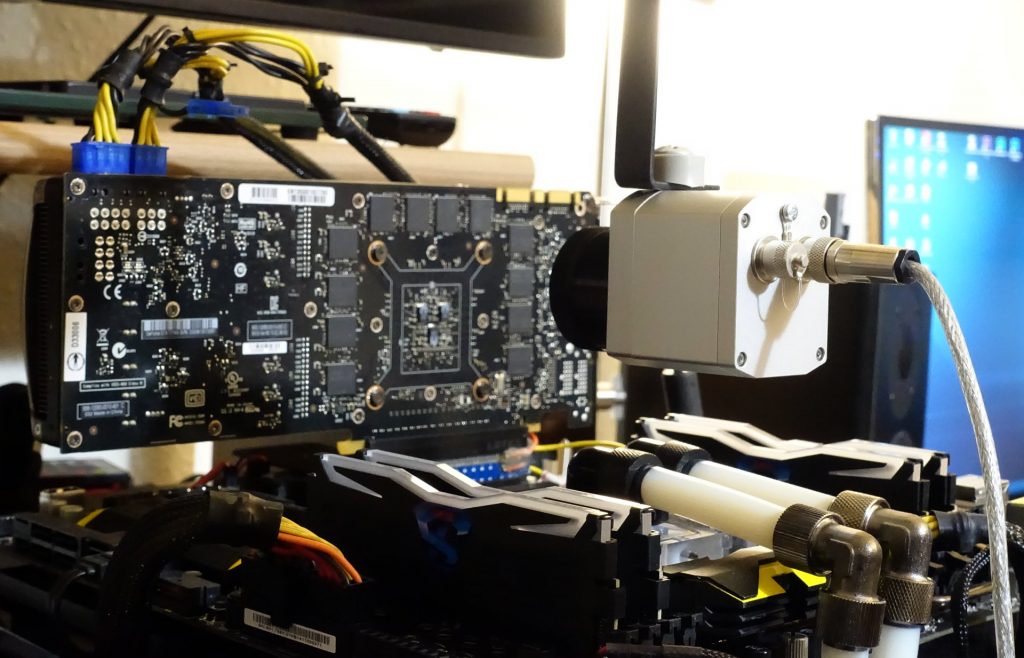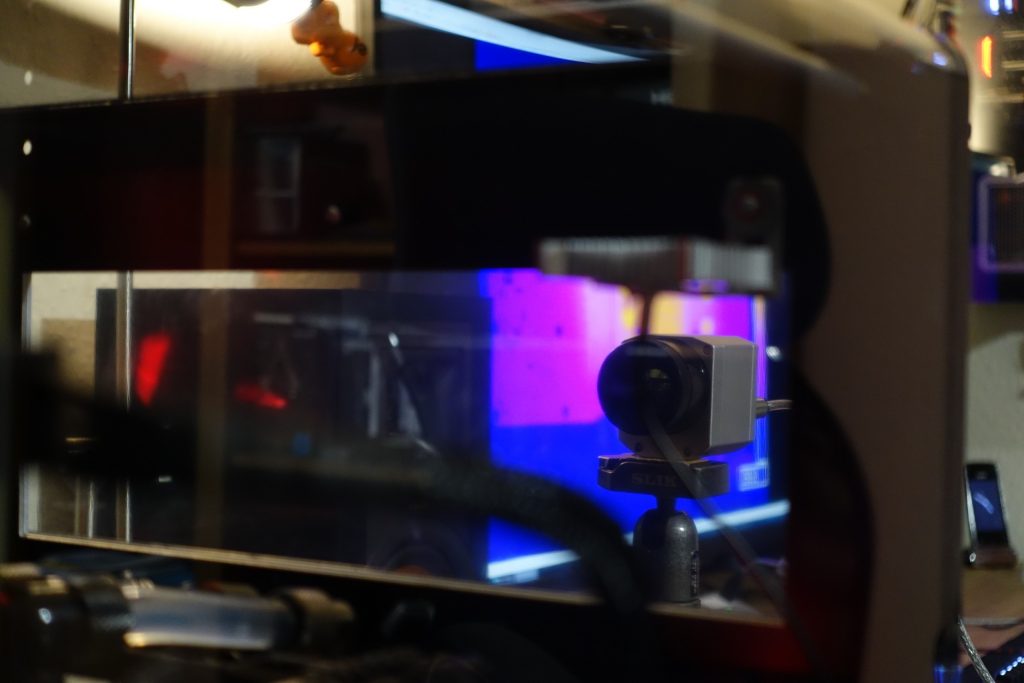The right base for graphics cards
Of course, there must be nothing in the way and nothing actively or passively shining on our test object. That’s why we don’t use an air cooler or a simple AIO compact water cooler with black rubber hoses for the CPU, but a full water cooler with transparent hoses and a very flat CPU cooler with 90° angles for the hose connections. The cards to be tested are also placed in a riser card that is about four centimeters high in order to keep the mainboard structures (RAM, cooling, etc.) out of the measurement area and to enable perpendicular measurements.
We use a very large and safe tripod with gallows for the camera, so that almost all positions can be safely adjusted and fixed to guarantee comparable camera positions during measurements. We know the case from the last page.
Summary
Actually, one can only advise ambitious and precisely working users not to close their minds to infrared technology, even if these are really cost-intensive things that are absolutely necessary for precise and optimal work. The results of the non-contact measurement can be very revealing if the measuring technique is used correctly and often explain many things for which one would otherwise search in vain for causes. However, such a decision also presupposes that one not only deals with the matter autodidactically, but at least attends courses and workshops (and also internalizes what is learned there as well as transfers it into practice), if one is not already familiar with such measurements and the associated circumstances from a professional point of view.
Without important materials such as measured paint to cover unknown surfaces (emissivity) and professional tape, most measurements quickly become estimates, because if the preconditions are not right, the temperature values displayed later will certainly not be. The use of inferior hardware store goods (IR thermometers) or simple handhelds or smartphone extensions without definable emission and transmission levels or the unquestioned use of the factory specifications for more expensive devices is not only self-deception, but also a (mostly unconscious) misleading of the readers who are presented with such results and take them at face value.
You have to make a little effort yourself, because just unpacking and starting blindly does not work.



































Kommentieren